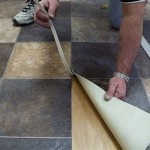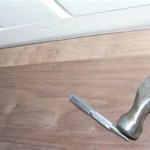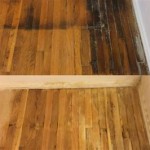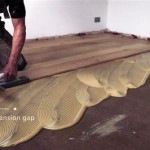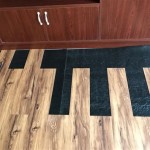Vintage Tile Flooring Patterns: A Design Legacy Accessible to All
Vintage tile flooring patterns evoke a sense of history, craftsmanship, and timeless style. Their enduring appeal lies in their ability to transform a space, adding character and visual interest that many modern flooring options struggle to replicate. Fortunately, replicating these classic looks doesn't necessarily require exorbitant costs. Many resources offer "vintage tile flooring patterns free," whether through online databases, historical preservation societies, or creative implementation of readily available modern tiles. This article explores the world of vintage tile patterns, examining their historical context, identifying key design elements, and providing resources for accessing these designs without incurring licensing fees.
The term "vintage" encompasses a broad range of styles, generally referring to designs from the late 19th century through the mid-20th century. These periods witnessed significant advancements in tile production, leading to a diversification of styles, colors, and patterns. Understanding the specific era influencing a desired pattern is crucial for achieving an authentic look. Victorian-era designs, for example, often featured intricate geometric patterns and rich, saturated colors. Art Deco tilework, prevalent in the 1920s and 1930s, embraced stylized motifs, bold lines, and a more streamlined aesthetic. Mid-century modern tile designs, conversely, tended towards simpler, more minimalist forms, often incorporating asymmetrical layouts and a broader range of pastel and earth-toned colors.
Before delving into the specifics of free resources, it’s important to clarify the subtle distinction between replicating a pattern and directly using a copyrighted design. The concepts presented here focus on recreating the essence of vintage patterns through original tile layouts, color combinations, and interpretations of historical motifs, rather than infringing on any existing intellectual property.
Understanding Key Elements of Vintage Tile Patterns
Successful reproduction of vintage tile flooring hinges on understanding the core elements that define these patterns. These elements include the shape and size of the tile, the color palette employed, the layout or arrangement of the tiles, and any decorative accents or motifs incorporated into the design.
Tile Shape and Size: Vintage tile flooring frequently utilizes a range of geometric shapes beyond the standard square. Hexagons, octagons, triangles, and even elongated rectangles were common, particularly in Victorian and Art Deco designs. The size of the tile also plays a critical role in the overall aesthetic. Smaller, more intricate patterns often employed tiles measuring just a few inches across, while larger tiles were used to create more expansive and less intricate designs. Modern tile manufacturers offer a wide array of shapes and sizes, making it relatively easy to find suitable replacements for vintage tiles.
Color Palette: Color is paramount in capturing the authentic feel of vintage tile flooring. Victorian designs often featured rich, saturated hues such as deep reds, greens, blues, and browns. Art Deco embraced bolder contrasts, juxtaposing black and white with vibrant accents of gold, silver, or jewel tones. Mid-century modern styles favored softer, more muted palettes, including pastels, earth tones, and avocado greens. Examining historical examples and color guides from the relevant period can help in selecting appropriate shades.
Layout and Arrangement: The way tiles are arranged is just as important as the tile itself. Common vintage layouts include checkerboard patterns, intricate geometric mosaics, and bordered designs. The "encaustic" look, where patterns are inlaid into the tile itself, was particularly popular in Victorian-era homes. While true encaustic tiles can be expensive, modern techniques such as using patterned tiles or stencils can mimic this effect. The layout should be carefully planned, considering the size and shape of the room and the desired impact of the pattern.
Decorative Accents and Motifs: Many vintage tile patterns incorporated decorative accents and motifs to add visual interest. These could include floral designs, geometric shapes, or stylized representations of animals or objects. These motifs were often created using contrasting colors or different tile shapes. In recreating these patterns, it's important to maintain a balance between detail and simplicity, ensuring that the accents complement the overall design without overwhelming it.
Navigating Free Resources for Vintage Tile Patterns
The term "free" in the context of vintage tile patterns can refer to several things: access to pattern designs without licensing fees, use of readily available and affordable modern tiles to replicate vintage looks, or creative approaches to achieving the desired aesthetic without incurring significant costs. Several resources can aid in the pursuit of free vintage tile patterns.
Online Databases and Archives: Numerous online databases and archives offer images and diagrams of historical tile patterns. Websites dedicated to historical preservation, architectural design, and antique interiors often feature galleries of vintage tile designs. These images can serve as inspiration for creating original tile layouts. Examining these resources provides a visual library of patterns and color combinations that can be adapted to suit individual projects. Remember that simply duplicating a copyrighted image may violate intellectual property rights. Focus on drawing inspiration from the general style and elements to create your own unique design.
Public Domain Resources: Some vintage tile patterns may be in the public domain, meaning they are no longer protected by copyright. This is particularly true for older patterns that date back to the 19th century or early 20th century. However, verifying the copyright status of a particular pattern is crucial before using it commercially. Reputable sources will typically provide information about the copyright status of the images they host. Even if a pattern is in the public domain, giving credit to the original designer or source is a good ethical practice.
DIY Tile Design Tools: Several free or low-cost online tools can assist in designing tile layouts. These tools allow users to experiment with different tile shapes, sizes, colors, and arrangements to create custom patterns. Some tools even offer pre-designed vintage patterns that can be modified to suit individual preferences. Using these tools can save time and effort in the design process and help visualize the final result before committing to a particular pattern.
Creative Reuse and Repurposing: Consider the potential of using salvaged or repurposed tiles to create vintage-inspired patterns. Architectural salvage yards and online marketplaces often offer a selection of vintage tiles that can be used to create unique and authentic designs. Repurposing tiles from other projects or even using broken tiles to create mosaics can be a cost-effective way to achieve a vintage look. This approach also promotes sustainability by reducing waste and giving new life to old materials.
Implementing Vintage Tile Patterns with Modern Tiles
The key to successfully replicating vintage tile patterns with modern materials lies in careful selection of tiles that mimic the shape, size, and color of their historical counterparts. Modern tile manufacturers offer a wide range of options, including ceramic, porcelain, and vinyl tiles that can be used to recreate vintage looks.
Color Matching: Matching the colors of vintage tiles can be challenging, as colors tend to fade over time. However, paint stores often offer color-matching services that can help identify the closest modern equivalent to a particular shade. Bring a sample of the desired color, or a high-quality photograph, to the paint store, and they can use a spectrophotometer to analyze the color and provide a formula for mixing a matching paint. This formula can then be used to select tiles that closely resemble the desired color.
Tile Shape and Size Selection: Select modern tiles that closely match the shape and size of the desired vintage tiles. If exact matches are not available, consider using slightly larger or smaller tiles and adjusting the layout accordingly. For example, if recreating a Victorian-era mosaic, smaller tiles may be necessary to achieve the intricate details. If replicating a mid-century modern pattern, larger tiles may be more appropriate.
Grout Selection: The color of the grout can significantly impact the overall appearance of a tile pattern. For vintage-inspired designs, consider using a grout color that complements the tiles and enhances the overall aesthetic. For example, a dark grout can highlight the shape of the tiles, while a light grout can create a more seamless look. Experiment with different grout colors to find the one that best suits the desired effect.
Pattern Layout and Installation: Careful planning and precise installation are essential for achieving a professional-looking result. Create a detailed layout plan before starting the installation process, and ensure that the tiles are properly aligned and spaced. Use tile spacers to maintain consistent grout lines and prevent the tiles from shifting during installation. If unsure about the installation process, consider hiring a professional tile installer to ensure a flawless finish.
Reproducing vintage tile flooring patterns offers a unique and cost-effective way to add character and style to any space. By understanding the key elements of these patterns, leveraging free online resources, and carefully selecting modern tiles, it's possible to recreate the timeless appeal of vintage tile without breaking the bank. The availability of diverse and affordable modern tiles, coupled with the wealth of historical information accessible online, empowers individuals to personalize their homes with designs that resonate with history and individual style. Remember to respect intellectual property rights by drawing inspiration from these patterns and creating original designs that reflect the essence of the vintage aesthetic.

Free Vector Realistic Ceramic Floor Tiles Vintage Pattern With One Type Or Set Composed Of Diffe

Free Vector Vintage Floor Tiles Pattern

Vintage Tiles S Free On Freepik

Page 3 Vintage Tile Floor S Free On Freepik

Ceramic Tile Floor Vector Png S Vintage Tiles Pattern For Free Golden Patterned Patterns

Page 11 Vintage Tile Pattern Vectors Ilrations For Free Freepik

Floor Tiles Texture Stock Photos S And Backgrounds For Free

Antique Ceramic Tiles With A Distinct Vintage Charm Perfect For Enhancing The Stoves And Fireplaces Aesthetic Background Tile Floor Pattern Wallpaper Free

Ceramic Tile Vintage With Weathered Cement Texture And Concrete Stone Mosaic Pattern Backgrounds Jpg Free Pikbest

Tile Flooring Samples Stock Photos Royalty Free S Depositphotos
Related Posts

